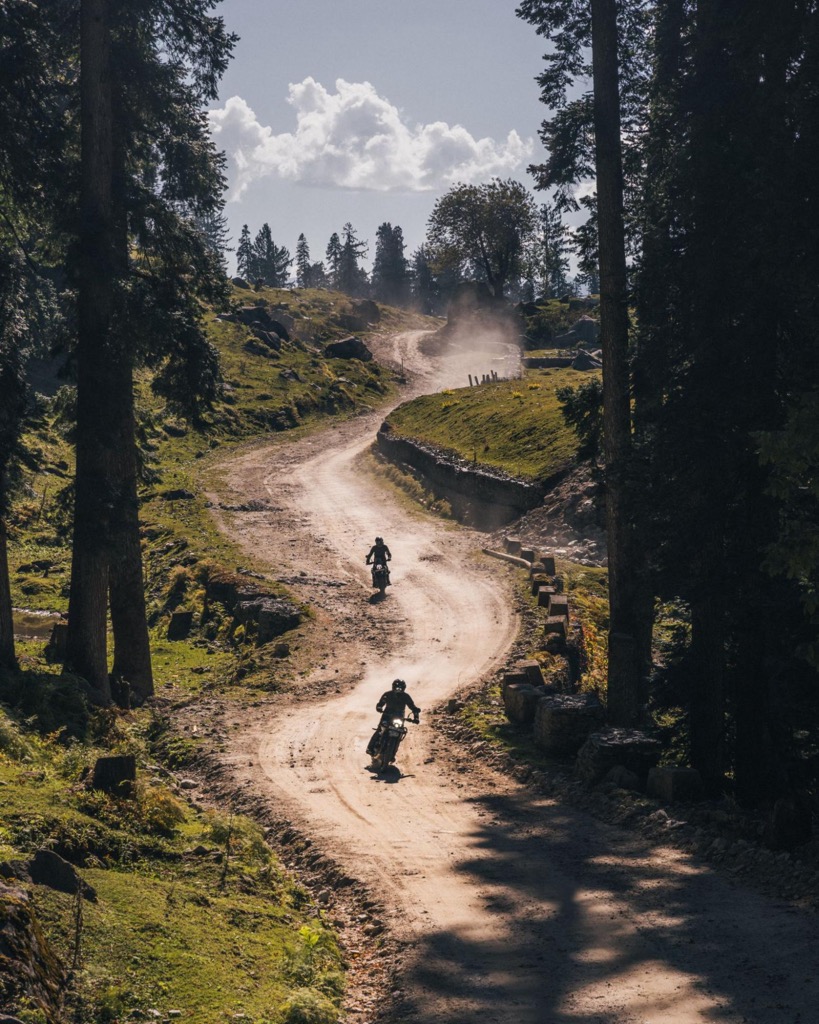Sometimes, two wheels are better than two feet. You're missing out if you’ve never considered exploring the mountains by motorcycle. This guide has everything you need to know.
By Owen Clarke
I’ve been climbing for around sixteen years and riding motorcycles for half as long. It wasn’t until relatively recently, however, that I found a way to combine my two passions. In recent years, I’ve ridden motorcycles in mountain ranges such as the Andes of Ecuador and Peru to the Accursed Mountains of Albania and North Macedonia, using them to access a variety of rock climbs and mountaineering objectives. I’ve become an ardent believer that compact, lightweight, and affordable, low-displacement motorcycles provide a unique way to access mountain objectives, from alpine climbs to backpacking routes.
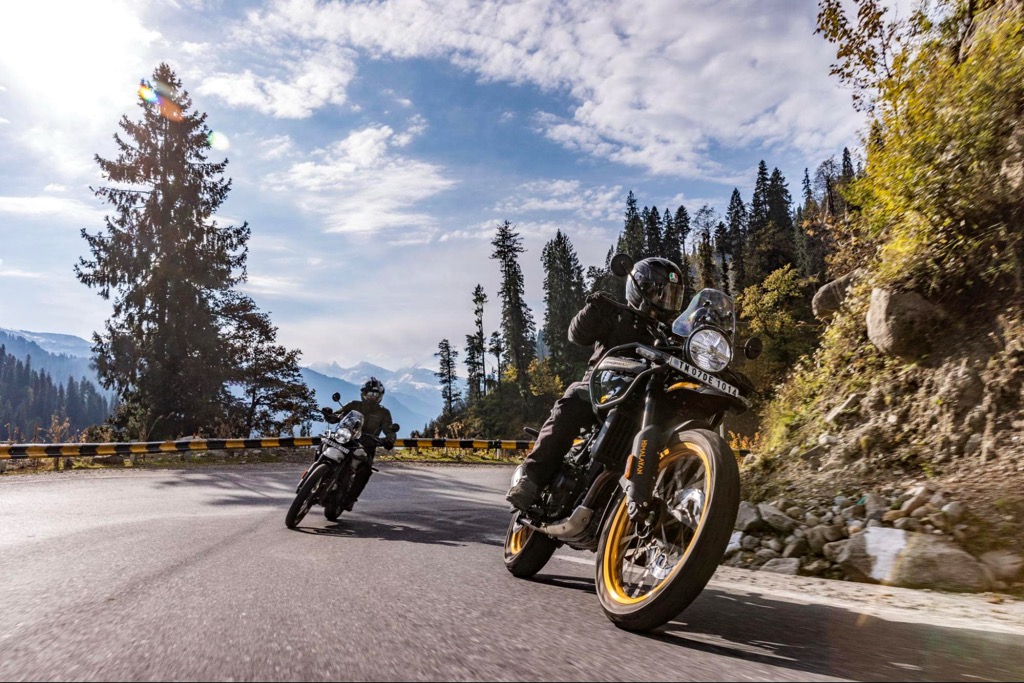
Here at PeakVisor, our aim isn’t just to give adventurers a tool to better explore and experience the alpine but to expand the way they interact with the mountains in the first place. The next time you’re entering a mountain range with PeakVisor, consider two wheels! Here’s why.
Why Bring Motorcycles to the Mountains?
Whether you're trekking, rock climbing, packrafting, fly fishing, or something else.... first, you have to get to the trailhead. No matter what country you’re in, many outdoor trailheads are accessible only by rugged 4WD roads. Naturally, most people take their car as close as possible to the trailhead and walk from there. Most people aren’t aware that motorcycles offer a slew of advantages over cars.
They’re Cost-Effective
Small-displacement motorcycles are significantly more affordable and have higher fuel economies than cars. You can buy 250cc bikes for just $1,000. Most of these bikes get upwards of 25 km/l, at least. This is especially true when you compare the average small displacement bike with a 4WD-capable car like a Jeep, truck, or SUV, which are major gas guzzlers and carbon emitters.
They’re Eco-Friendly
On average, motorcycles emit far less carbon dioxide than cars, the biggest factor on our minds today with combustion engine use. Yes, some motorcycles are more polluting than some cars (emitting more hydrocarbons, nitrogen oxides, and carbon monoxide).
But when it comes to global warming emissions—carbon dioxide—there's no question who's worse. When you factor in the overall energy expenditure and raw material in producing a motorcycle vs. a car, motorcycles are a clear winner in the “eco-friendly” debate.
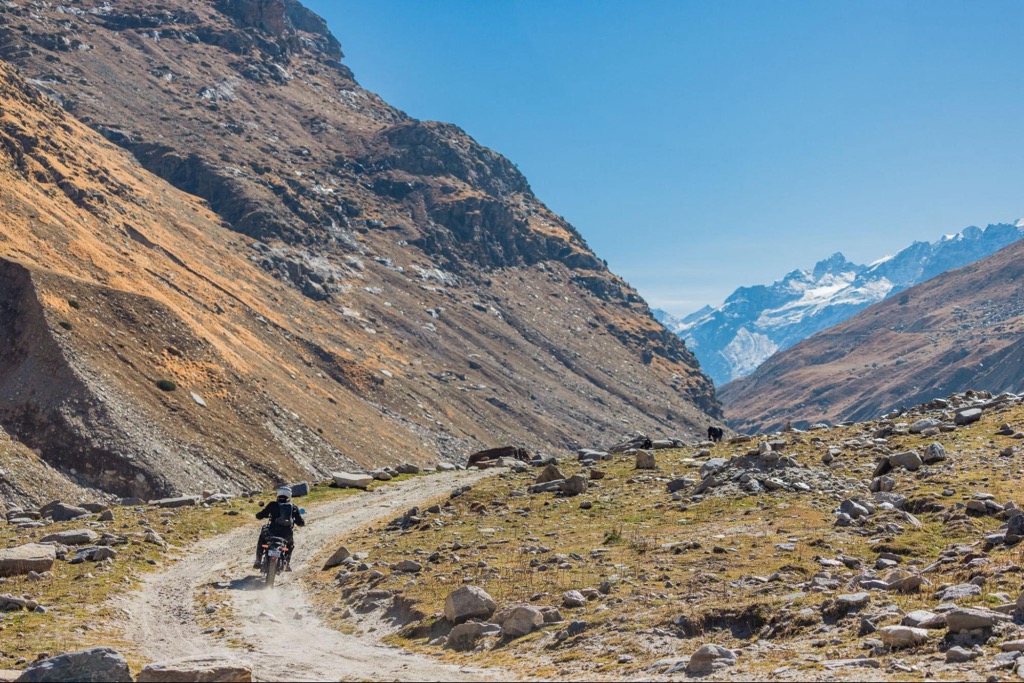
Motorcycles MAGNIFY Your Adventure
With a car, the adventure begins when you reach your trailhead. With a motorcycle, the adventure begins the moment you leave home. That two-hour drive may take to get to the nearest wilderness space, generally inside the closed-off, sterile walls of a car? Now you're out in the air, intimately connected with your environment.
A motorcyclist must be conscious of weather, road conditions, overpacking, other cars, and numerous other factors, making for an infinitely more mindful, intimate adventure experience.
How to Learn to Ride a Motorcycle
Before we dive into topics like choosing a motorcycle, choosing a route, and gear, we have to talk about the elephant in the room… learning to ride! If you don’t already know the basics of riding a motorcycle, you’ll have to become a somewhat comfortable rider before taking your bike onto alpine roads and tracks.
Options for learning to ride a motorcycle vary depending on your country. In the United States, the Motorcycle Safety Foundation (MSF) is a nonprofit offering a “Basic RiderCourse” at over 2,500 locations nationwide, primarily motorcycle dealerships. This course combines both online learning and 10 hours of on-motorcycle training.
The MSF course will teach you about different types of motorcycles, the layout and operation of controls, and skills like stopping, shifting, turning, and straight-line riding, explore concepts like countersteering, and later learn more advanced techniques like trail braking and swerving.
Most other countries have resources similar to the MSF. The United Kingdom, for example, has BikeSafe. Even basic licensing for low-power bikes requires a 7-hour safety course in France.
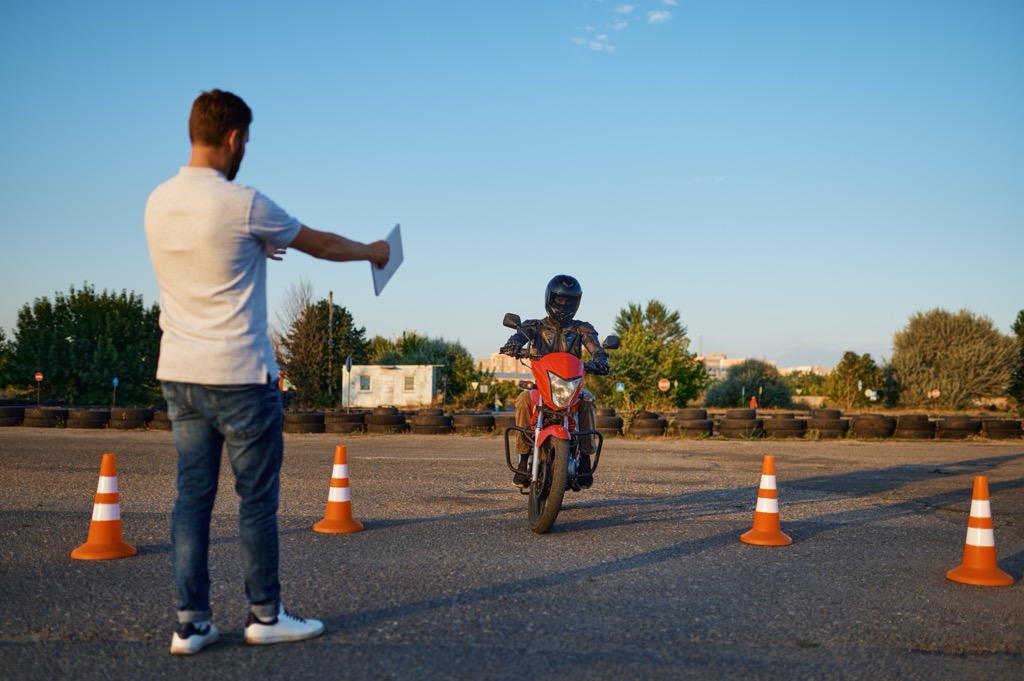
Choosing a Motorcycle
The best motorcycle for adventure riding in the mountains will depend on two primary factors: your objective and your experience as a rider. In general, look for features like a simple, minimalist HUD, windscreen and mudguards, all-terrain tires, burly suspension, high clearance, and a seat height that allows you to touch the ground comfortably.
Popular heavyweight adventure bikes include the BMW GS, Triumph Tiger, and the KTM Super Adventure. If you’re riding with another person on pillion, you’ll need a heavier, more powerful bike like this. But beyond this, heavy bikes can be much more challenging to take into technical terrain. They’re harder to maneuver, tough to pick up if dropped, and hard to position on angled terrain.
In this article, I propose lightweight (sub 140kg) low-displacement motorcycles as the ultimate tool for mountain access. Little bikes like this are affordable and nimble, simple and cheap to maintain, and easy to pick up if you go down (Don’t kid yourself… You will go down every now and then). One example would be the Royal Enfield Himalayan adventure bike.
Ultimately, choosing a motorcycle is a lot like choosing a pair of hiking boots. You have to try ‘em on to see if you like the fit! Visit a dealership near you and go for a test ride.

Choosing a Route
There are a few things to consider when choosing routes. One of my favorite trips was riding motorcycles around the volcanos of Guatemala. One highlight was taking a bike up to above 4,000 meters to hike Tajumulco (4,220m / 13,845ft), the tallest peak in Central America.
Another was when I took a bike into the Ancash of Peru, circling Huascarán (6,768m / 22,205ft), the highest peak in Peru. The highest vehicular tunnel in the world, Punta Olimpica (4,735 m/15,535ft), is also nearby. I also recommend riding a small bike around New Zealand’s Southern Alps.
These were all enjoyable trips, but the gist of what I’m saying is that you can pick any country with roads and mountains and have a fun time on a motorcycle. The Andes and the Himalayas may be the two tallest mountain ranges in the world. Still, lower ranges, like the Atlas Mountains of Morocco or the Julian Alps of Slovenia, are more viable for newer riders and present a unique opportunity for untrammeled adventure riding. Let's discuss a few things to keep in mind, though.
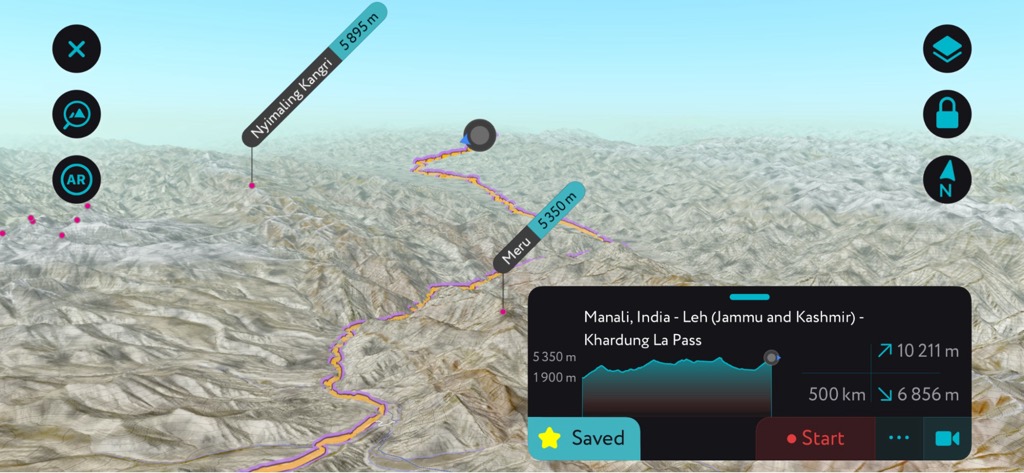
Check out the app to find thousands of lifts, trails, ski tours, peaks, cabins, and even parking areas worldwide. It’s all on here. The PeakVisor app is available for iOS and Android; give it a shot and discover our visually stunning 3D Maps, adding a new dimension to your alpine adventures.
Don’t Overdo It
You’ll constantly be confronted with jaw-droppingly beautiful terrain when riding in the mountains. Unlike traveling by car or bus, you won’t always be able to focus on this scenery; you’ll be focusing on driving your motorcycle. So leave plenty of time to stop, and underestimate the amount of kilometers or miles you plan to tackle each day.
Even a seemingly short distance, like 50 or 100 kilometers (30 or 60 mi), can make for an enjoyable full day’s ride in rough, picturesque mountain terrain. In addition, don’t expect paved roads. Do your research, but be ready—particularly in developing nations—to ride slowly on poorly maintained roads for much of your adventure. That's another reason to be mellow in your distance goals.
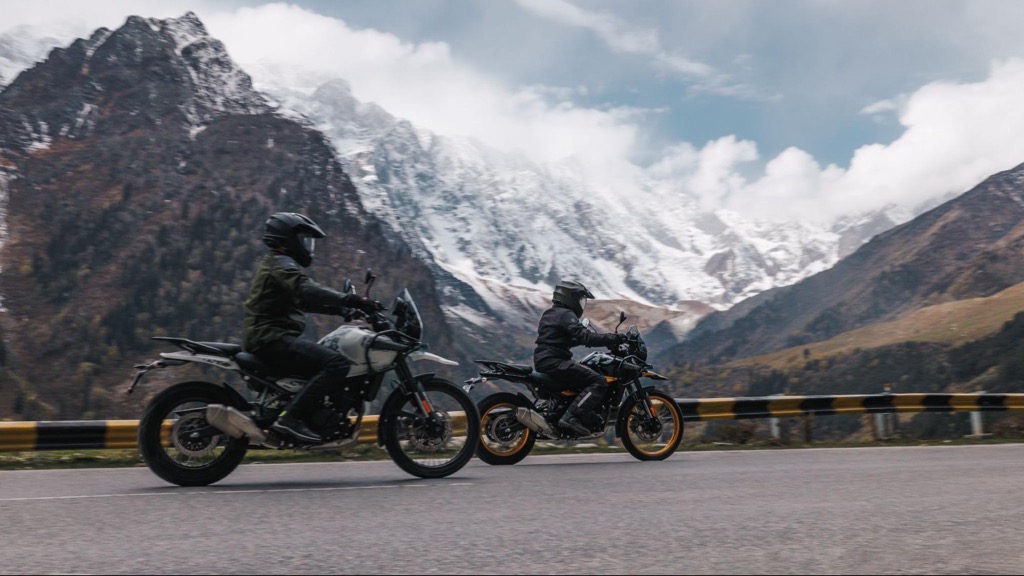
Be Conscious of Elevation
When moving on foot, you gain elevation slowly. You can climb a few hundred meters in minutes when riding a motorcycle. So, be conscious of the elevation of your route. Even elevations as low as 3,000 meters (10,000ft) can cause altitude sickness, and you’ll gain and lose elevation on a motorcycle far quicker than you’re used to.
Unlike in a car, you’ll also be exposed to the elements, so driving at high elevations typically means wind, cold temperatures, and possible precipitation like snow and ice.
Be Flexible
Riding a motorcycle is all about going with the flow, and in the mountains, this isn’t just a good idea; it’s a necessity. If you’re hit by a freak rainstorm, you may need to change your plans and spend the day drinking beers at a roadside restaurant instead of riding. If snow blocks the pass you plan to cross, you must find an alternate route.
It may feel irritating to be stymied by rain, snow, and other hazards that you could quickly drive through with a car, especially if you’re chasing an objective, like climbing an alpine route or starting a multi-day trekking trip. But just remember that the motorcycle offers you a unique way to connect with the environment around you, one you wouldn’t be privy to when partitioned off behind the glass windows of a car.
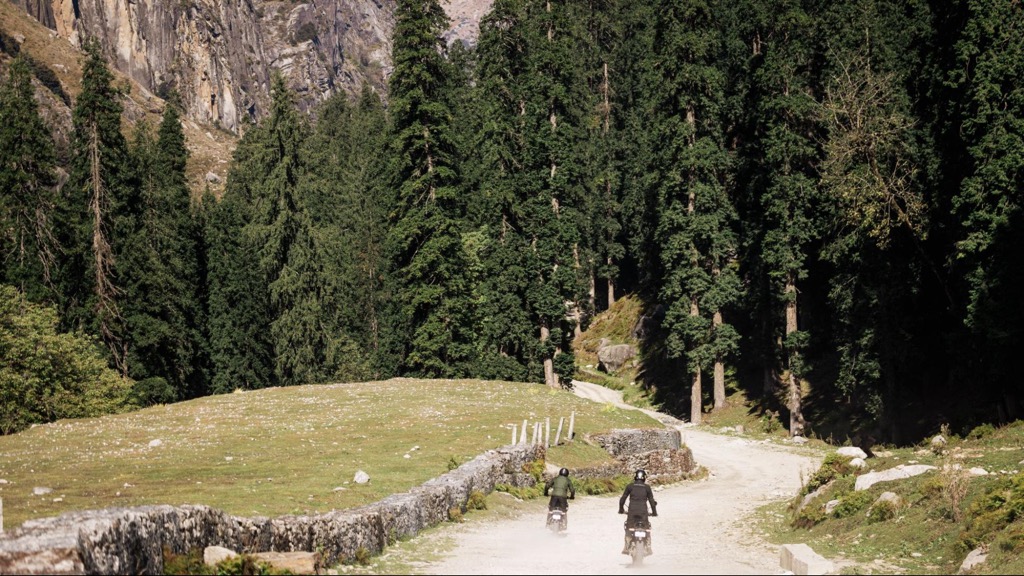
What to Bring and Wear
- Full-face helmet with sun visor
- Goggles
- Riding gloves
- Riding boots (waterproof)
- Windproof armored riding jacket
- Windproof armored riding pants
- Thermal base layers (lower and upper)
- Buff, scarf, or other wind barrier for your neck
- Waterproof pants
- Waterproof jacket
- Water purification system (pump or chemical treatment)
- Riding backpack
- Water (2L to 4L)
- Snacks
- Compact shelter in case of emergency
- A bivy sack will do, but there are also dedicated motorcycle tents like the Wingman of the Road Goose and the Abel Brown Nomad. These are both tents I’ve used and recommend for specific scenarios.
- Windproof lighter
- Pocketknife or multitool
- Motorcycle tool kit
- Will vary depending on the bike, but should include fuses and essential tools for maintenance and repair of brakes, cables, tires, and chains, such as screwdrivers, a ratchet and various socket heads, needlenose pliers, hex keys, electrical wire, tape, hosing, and ties.
- Chain lube
- Tire pressure gauge and hand pump
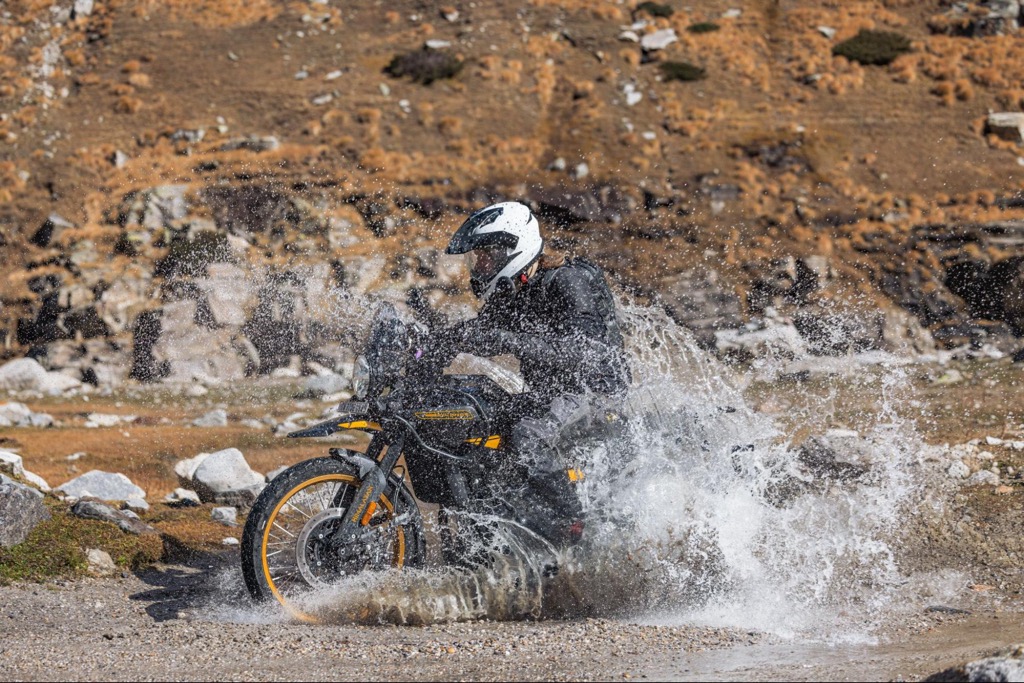
Tips and Tricks for Riding in the Himalayas
I recently spent a week in the northern Indian state of Himachal Pradesh, riding through the Himalayan Range with Royal Enfield, testing their new and improved Himalayan adventure bike. While there, I spoke with some of their expert riders and guides to get specific tips for riding in this region.

In the Ladakh region—the crown jewel of the Indian Himalayan—they recommend riding between April and October, with June onwards presenting the ideal conditions. From June until mid-August, there is heavy rain in much of the lower Himalayas, but areas like Manali in the Himachal, where we tested the new bike—are typically rain-free. The Jammu and Kashmir region is also viable but can be difficult to navigate due to the political upheaval in the region.
For a wilder, more remote experience, head to the lower ranges of Arunachal Pradesh in the Far East or even Nepal. However, you should know that renting a motorcycle and crossing borders is typically illegal in India and Nepal - you may need to rent a different bike in each country.
Particularly in the early seasons, as snowmelt is coming down from the higher elevations, water crossings are common, and waterproof gear is a must. When managing elevation, local motorcycle guides recommend avoiding medication. Taking your time and naturally acclimatizing is a better course of action, as the medication will only act as a temporary stop-gap, and altitude symptoms will recur once your medication wears off. A notable exception to this is anti-diarrheal meds. Bring these!
Start your ride early each day, as rivers will rise in the afternoon, and landslides become more common as terrain thaws in the sunlight. Carry at least enough fuel for 300 to 400 kilometers or more in remote areas. In some regions, you could travel 500 to 600 kilometers without finding a fuel station, so if your bike can’t accommodate that, bring spare fuel cans.
These guides don’t recommend wild camping. It can be problematic, and access is varied. Instead, search for local accommodations or paid campsites. Bringing a satellite phone is also not recommended, as there is enough road traffic to help you in case of an emergency during the riding season, and a satellite phone will often get lost, broken, or stolen.
Instead, know your motorcycle and how to repair it, and don’t be afraid to ask locals for help; more than half understand English. If you require medical help, these guides recommend approaching military camps scattered throughout the mountains.
Some of the best passes to ride are Kardung La (5,359m / 17,582ft), Taglang La (5,640m / 17,480ft), and Umling La (5,640m / 18,504ft), and Singe La (4,955m / 16,257ft) in Ladakh and Rohtang (3,977m / 13,048ft) in the Himachal. Other sites include the Zangskar Valley region and Changtang National Protected Area.
